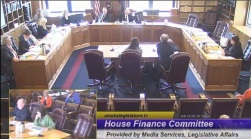When asked about alternative proposals to address Alaska’s current fiscal situation that are founded on using Governor Hammond’s original vision for the Permanent Fund, the current Administration and, now, apparently, the Senate Republicans are falling back on the same mantra — “the numbers don’t work.”
Well, the numbers do work and we capture the reasons why in this slide deck. Use the right revenue forecast, start using the “other half” of the annual revenues from the Permanent Fund for the purpose intended by Governor Hammond (to help fund “essential government services”), view and use the accumulated amount in the earnings reserve account for what it was originally intended (as a savings account to help fund “essential government services” during low points in the oil price cycle) and maintain total UGF spending at last year’s $4.3 billion (the sustainable budget number) adjusted going forward for inflation and population change (growth or decline) and Alaska’s fiscal situation stabilizes, without PFD cuts or taxes.
Going further, by cutting the PFD as the Administration (SB 26), House Majority (HB 115) and now Senate Majority (SB 70) have proposed and, in some instances, imposing additional taxes on top of that (as the Administration and House propose) leads to even more erosion in overall Alaska income, huge increases in statewide poverty levels and vastly increased income disparity between high income Alaskans on the one hand, and middle and low income Alaskans on the other.
In short, all three bills make Alaska’s overall recession worse, and in Alaska’s version of Simon Legree, focuses its most harsh effects on those who can afford it least.
We outline why Governor Hammond’s 50/50 vision works, and the adverse effect on Alaskans by going further, in this slide deck from last week’s presentation at one of the World Trade Center Anchorage’s periodic “Meet & Brief” luncheons. We encourage readers to review it if you haven’t before, and to share it if you agree with the approach and want others to be aware of it as well.
________________________________________
This post first appeared on Alaskans for Sustainable Budgets, a blog focused on News & Commentary on Alaska fiscal and economic policy on national website Medium.

 Over the weekend we prepared and submitted our comments to the House Finance Committee on the proposed House Operating Budget (HB 57). Here was the summary:
Over the weekend we prepared and submitted our comments to the House Finance Committee on the proposed House Operating Budget (HB 57). Here was the summary:
 Last Tuesday afternoon I was sitting in my home office in Anchorage (working on taxes, actually) when I received a call, telling me that HB 311, this session’s version of a bill first introduced by Rep. Charisse Millet in 2013, was up for hearing before the House Finance Committee at 8:30am the following morning. The bill, which requires the Governor to submit as part of his annual budget the “sustainable budget” number calculated consistent with the “Goldsmith/ISER” approach, had received two hearings in the prior legislature (2013-14) (
Last Tuesday afternoon I was sitting in my home office in Anchorage (working on taxes, actually) when I received a call, telling me that HB 311, this session’s version of a bill first introduced by Rep. Charisse Millet in 2013, was up for hearing before the House Finance Committee at 8:30am the following morning. The bill, which requires the Governor to submit as part of his annual budget the “sustainable budget” number calculated consistent with the “Goldsmith/ISER” approach, had received two hearings in the prior legislature (2013-14) (
You must be logged in to post a comment.